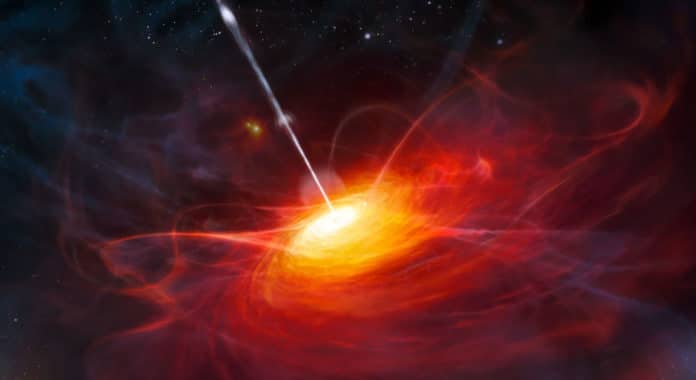Every galaxy has a black hole at its center that is million-billion times massive than the Sun. Their gravitational pull is extreme enough that they can consume vast amounts of gas, dust, and perhaps even stars that wander into their vicinity.
The material falling into the black hole forms an accretion disk around the black hole. These accretion disks are the most uninviting, violent places in the known Universe, with velocities approaching the speed of light and temperatures far in excess of the surface of our Sun.
This heat produces radiation which appears as light. The conversion of heat to light is about 30 times more efficient than nuclear fusion.
Recently, we got to see the first picture of a black hole‘s accretion disk that belongs to a very nearby galaxy. However, this experiment can’t be repeated on more distant galaxies as the disks are too small and unresolved, even by the largest telescopes.
Fortunately, another method exists to probe the size and structure of distant accretion disks: by studying the variation in its intensity. By checking the variations in the disks’ light, they can probe the accretion disks of even the most distant galaxies.
Using the method, DAWN Ph.D. Fellow John Weaver observed more than 9,000 galaxies with bright accretion disks — the so-called quasars — from the observational program “Sloan Digital Sky Survey.”
Weaver noted, “When the source is not resolved, the observed light from the accretion disk will be “contaminated” by light from the galaxy hosting the black hole. Previous studies have largely ignored this unwanted light from the host galaxies.”
This new model allowed the team to separate the light of the accretion disk from that of the host galaxy. They could see the light from the accretion disk around supermassive black holes, even in galaxies billions of lightyears away.
The team found that cosmic dust near the accretion disk was likely blocking their view. Using several different cosmic dust models to account for and remove its obscuring effects, they determined how hot the accretion disk is, near the black hole and far from it at the edges of the disk.
They found that the disks are even hotter near the black hole than predicted.
Weaver said, “It also suggests that our assumptions and theoretical models need to be revised — with consequences for our understanding of supermassive black holes all together.”
Journal Reference:
- John R Weaver et al., Dust and the intrinsic spectral index of quasar variations: hints of finite stress at the innermost stable circular orbit, Monthly Notices of the Royal Astronomical Society (2022). DOI: 10.1093/mnras/stac248
